Traveling the country with an RV is a great way to spend a vacation. Having your passenger vehicle towed behind it gives you more options when you get to a destination, as you won't have to worry about traversing in traffic with a bulky RV. If you are wondering if you can flat tow your all-wheel-drive vehicle behind your RV, we can help you. We researched professional towing from multiple sources, so you'll know for sure if it's possible.
You will not be able to flat tow an all-wheel-drive vehicle behind a camper safely. Doing so will do significant damage to your vehicle.
Now that we know you cannot safely flat tow an all-wheel-drive vehicle behind your camper, we'll look at what doing so would do to your car. You might also be wondering how you can tow an all-wheel-drive vehicle or if you can flat tow a four-wheel drive. For the answers to these questions and more, read ahead in this post to see what our research has discovered.
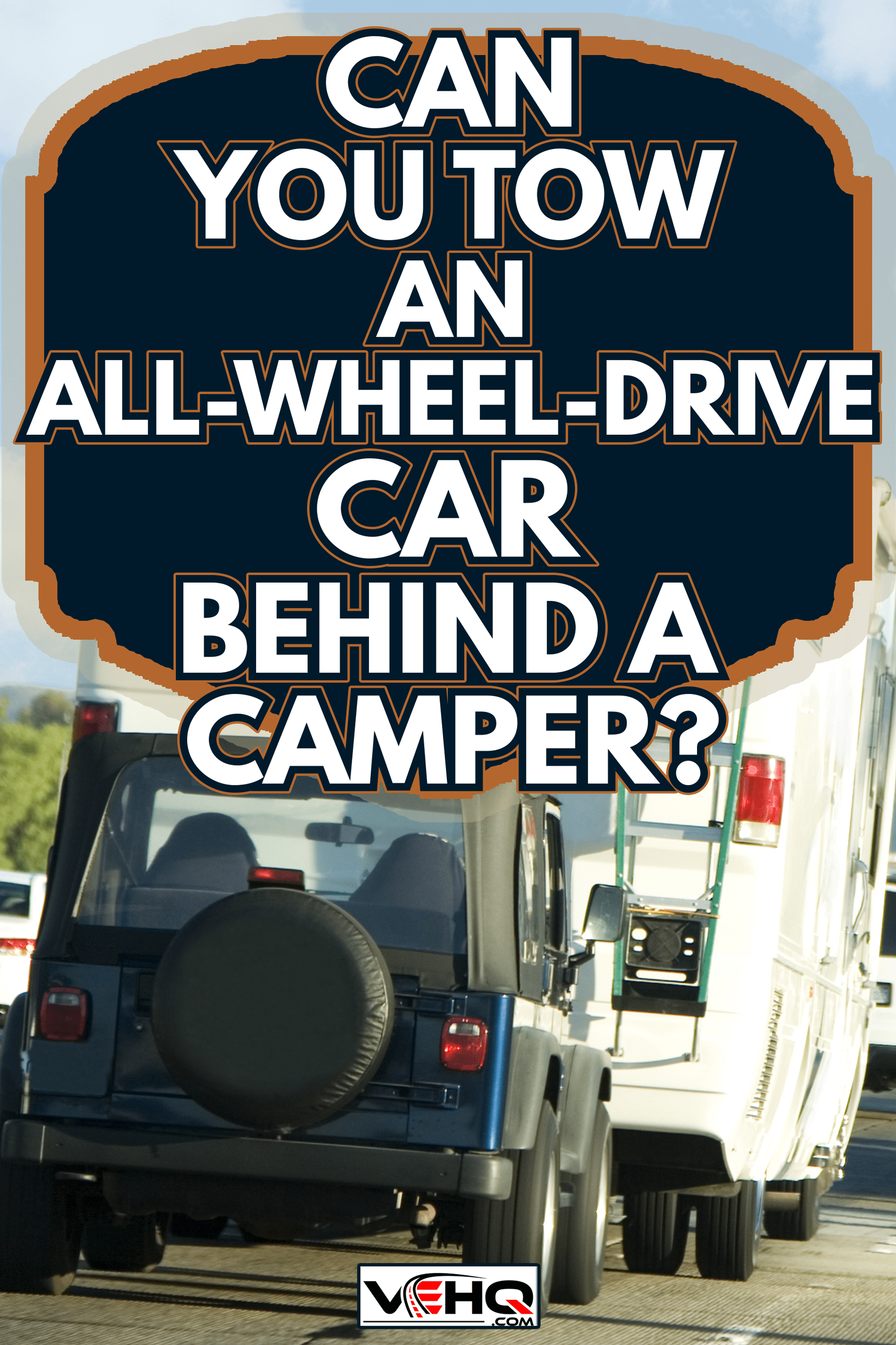
What flat towing will do to an all-wheel-drive vehicle
Car and Driver tells us that all vehicles with a manual transmission can be flat towed. But as these vehicles have had their popularity give way to automatics, the number of vehicles on the road that can be flat towed has decreased. Some automatic transmission vehicles can be towed but towing one that shouldn't be can have severe consequences for your ride.
Each wheel is connected to the drive train via the driveshaft with all-wheel-drive vehicles. Any pulling on these wheels will harm the drivetrain.
The transmission will go to work as the vehicle is in motion. But without the engine running, the transmission will have no way to cool itself. You'll find that the working transmission will overheat and become permanently damaged in no time.
How can I safely tow an all-wheel-drive vehicle?
So, if you cannot safely flat tow an all-wheel-drive vehicle, how can you transport it? Aside from flat towing, there are two other towing options for vehicles. Let's take a look at each one and determine whether or not they will work for your vehicle.
Dolly towing
The method known as dolly towing is when you elevate either the front or rear end of the vehicle and have it towed. There are towing dollies available for purchase or rent at most truck rental and RV suppliers. But will it work for an all-wheel-drive?
Remember that each wheel is connected to the drivetrain through the driveshaft. So the two wheels left on the ground will make the transmission think it needs to work. Towing in this fashion will do the same amount of damage to this vital [and expensive] part.
Dolly towing is out unless you have a two-wheel-drive vehicle. That leaves only one correct method for towing an all-wheel-drive vehicle.
Trailering
The only way to safely tow an all-wheel-drive vehicle is to have all four of its wheels securely off of the ground. This can be done by trailering the vehicle on a platform and securing it. The trailer's wheels will be on the ground, and your all-wheel drive vehicle will be safe from transmission damage.
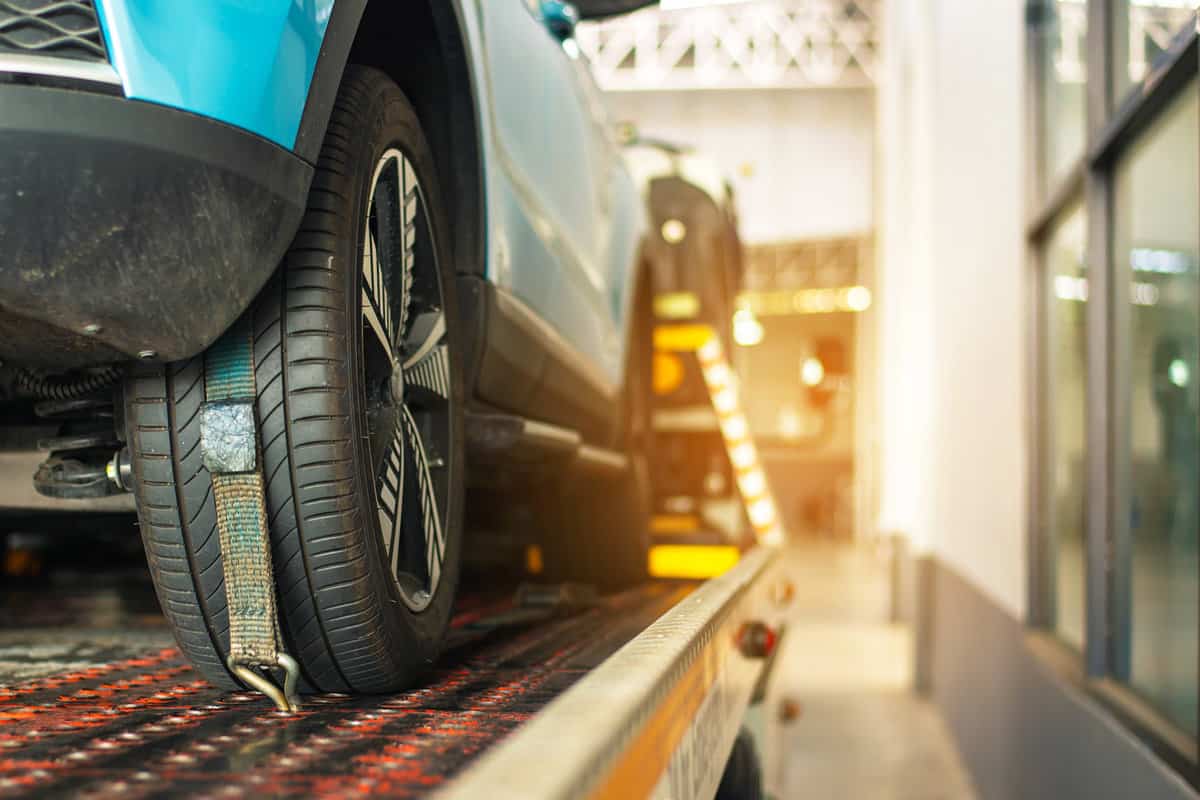
What is towing capacity?
Any vehicle capable of towing another behind it has a towing capacity. This is based on how much weight the engineers who designed the vehicle can prove that it can pull without any damage.
The vehicle's towing capacity can be easily found inside the owner's manual. This is a significant number to know, as you should never exceed it. We'll detail what happens if you do later in this post.
There are ways that some trucks can have their towing capacity increased. This includes upgrades to the radiator, better suspension systems, and other add-ons that might be included in a tow package when the vehicle is purchased. Or you can get these upgrades in the aftermarket from your dealership or a trusted mechanic.
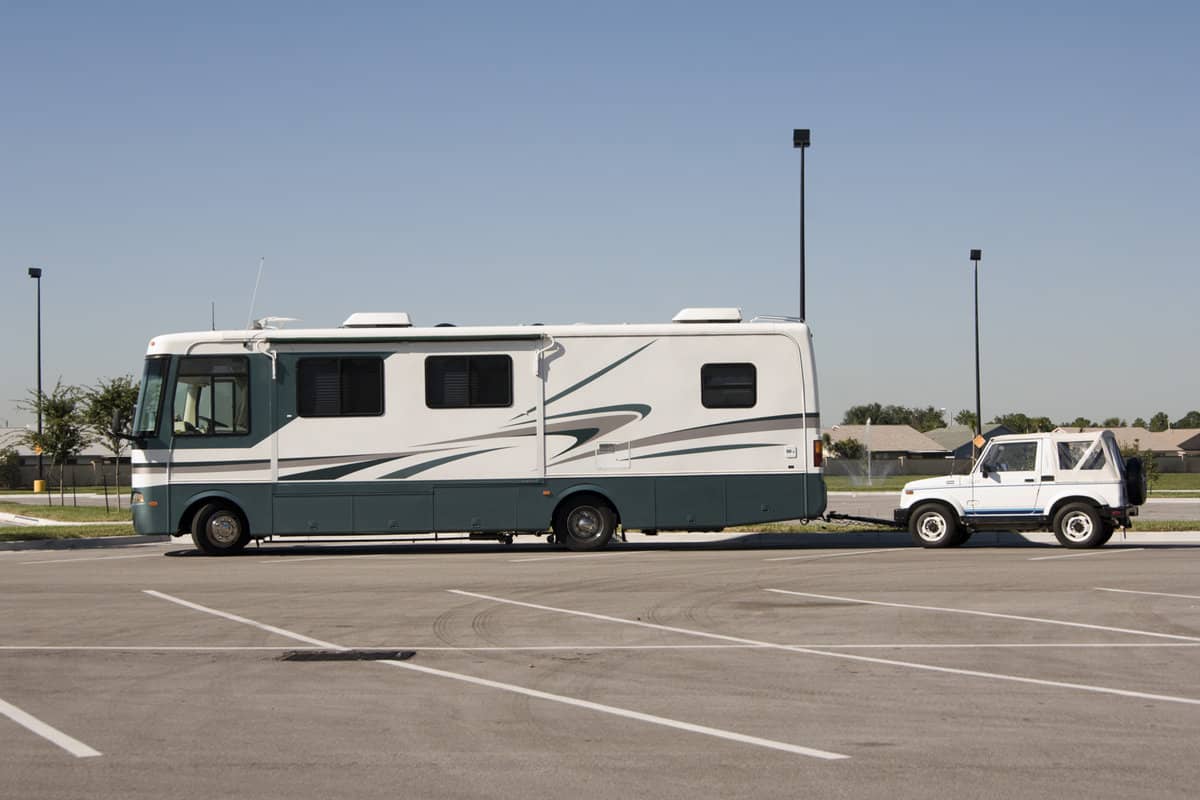
Can I flat tow a four-wheel-drive vehicle behind my camper?
With a four-wheel-drive vehicle, you have a much greater likelihood of being able to flat tow behind a camper. This drive configuration will sometimes allow all four wheels to be on the ground, so long as you have the proper equipment and the know-how to hook the vehicles together.
While some four-wheel-drive vehicles can be flat towed, it doesn't mean that all will be suitable for this method of towing. Before you even begin to hook your vehicle up, consult your owner's manual to see if this method is suitable. You might find that they forbid flat towing for your particular model.
Most model Jeep Wranglers and Jeep Cherokees can be flat towed. As for four-wheel-drive pickup trucks, consider the Chevy Colorado, GMC Canyon, Dodge Ram, Chevy Silverado, or Ford F-150. The Chevy Equinox and GMC Terrain are great SUV options for flat towing.
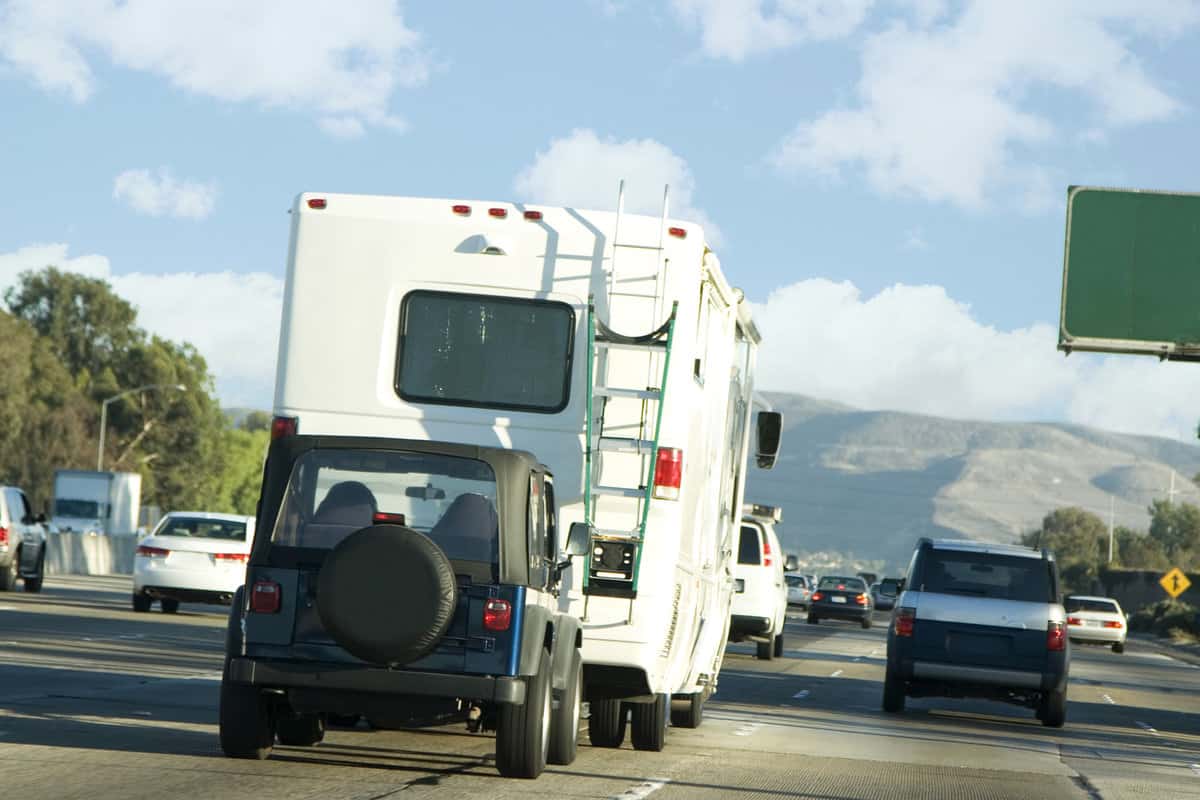
What happens if I exceed towing capacity?
Manufacturers put limits on what their vehicles can and cannot do for excellent reasons. When it comes to towing, it's vital that you know these limits and that you strictly abide by them.
Ignoring and exceeding the towing capacity of any vehicle will expose your vehicle to expensive damages and put you and others at personal risk. Always consult your owner's manual BEFORE you tow so that you are fully aware of those limits.
The risks you will expose yourself to include:
Transmission damage
Your transmission is a challenging piece of equipment. But it still has its limits. The more weight your vehicle has on board or behind it, the harder the transmission has to work.
The more it works, the hotter it will get. The cooling system will have to work overtime to keep the transmission from overheating. The more weight involved, the harder it must work like the transmission.
When the weight is too much for the cooling systems to keep the temperature of the transmission in check, the transmission can overheat. This will cause a great deal of damage to it and can even result in transmission failure.

Warping your frame
The frame of your vehicle is super strong. But it is only rated to have so much weight pulling behind it. Exceed the towing capacity, and you can warp the frame.
You might not immediately notice this type of damage, but even slight damage to your frame will be noticeable over time.
Tire damage
Tires spinning at high speeds on the roadway generate a lot of friction. This heat won't usually be a problem, as the tires are rated for it.
But if you add more weight than the tires are engineered for, it will add more heat than they can handle. This can cause some pretty severe tire damage and even create blowouts.
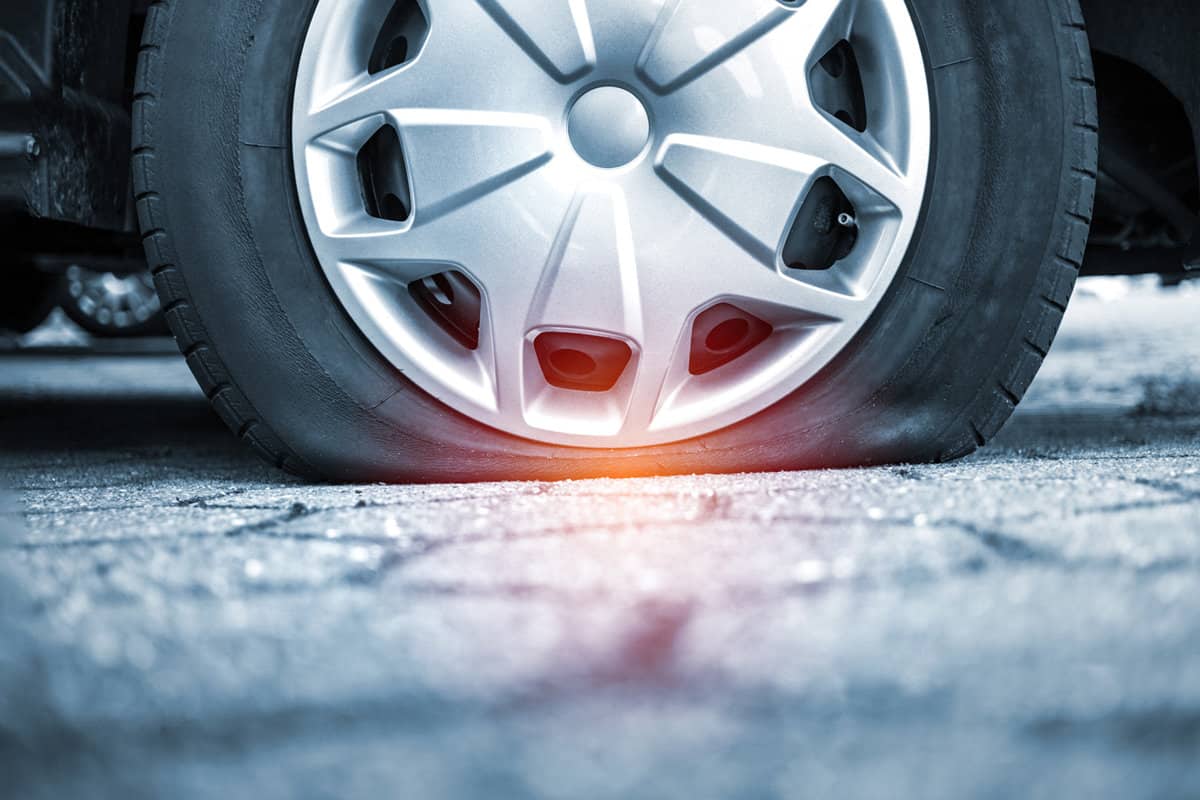
Engine overheating
Like your transmission, your vehicle's engine has its temperature kept in check with a cooling system. But if this cooling system is overwhelmed by all the excess weight you're towing, it won't be able to keep up.
An engine that gets too hot can cause your vehicle to stall. It can also crack the engine block, warp the pistons, and do considerable damage to other vital components under the hood.
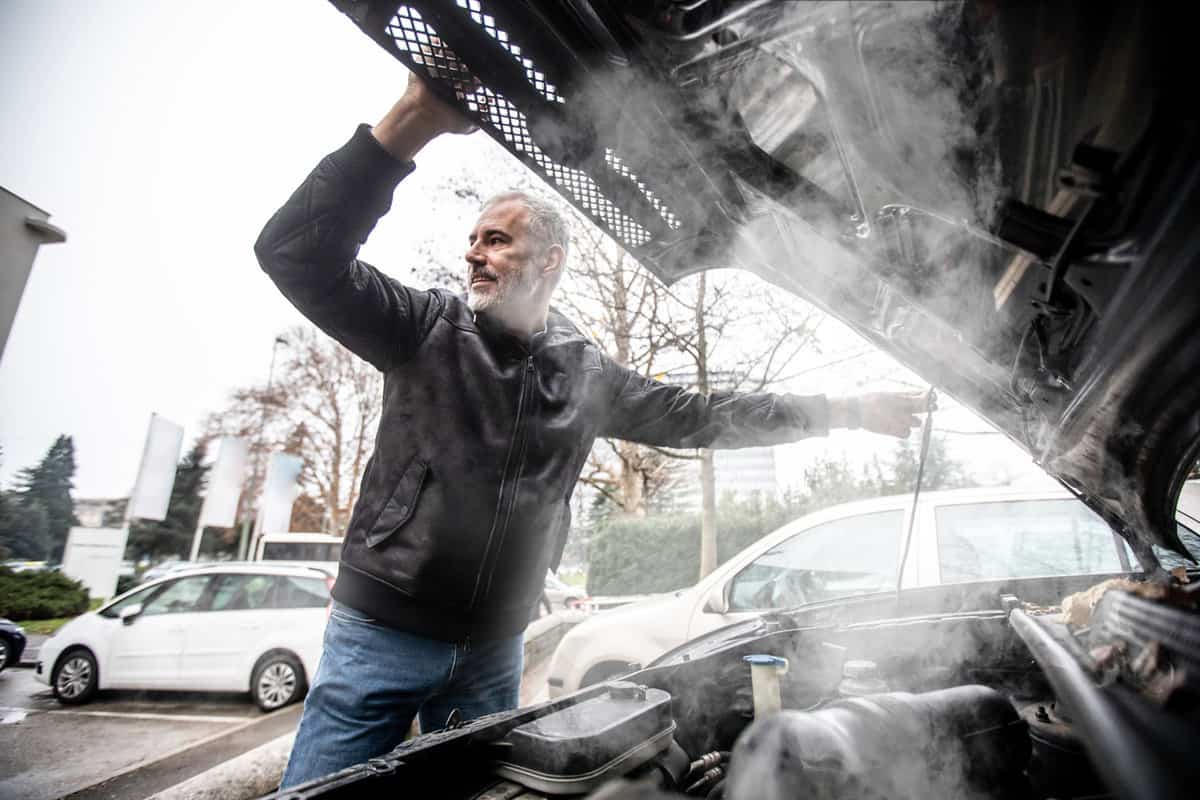
Detachment
A trailer that detaches puts everyone on the roadway at risk. As your vehicle is only rated to pull so much weight behind it, don't be surprised if it detaches if you overload.
A stray trailer or vehicle on a highway can cause some serious damage. Collisions can occur, putting the lives of those with you sharing the road at great risk.
Never overload your vehicles, and always stay within the manufacturer's guidelines for towing capacity.
Final thoughts
Just because an all-wheel-drive vehicle cannot be flat towed does not mean that you cannot tow it in another manner. Certain four-wheel drive vehicles can be towed flat. Just consult your owner's manual before attaching it to a tow vehicle. Always stay under the manufacturer's towing capacity to avoid damage to your vehicle and maintain safety. Drive safe!
We hope you found some useful information in this post on towing an all-wheel-drive car. For more information, we recommend the following posts:
Towing Capacity and Trailer Weight – What RV Owners Need to Know
